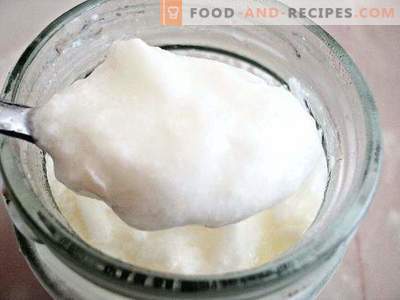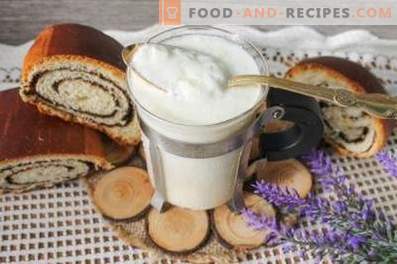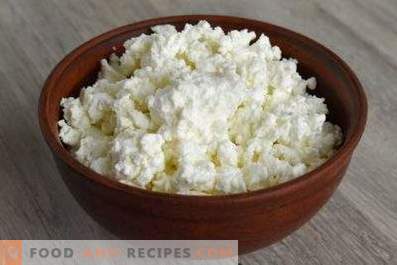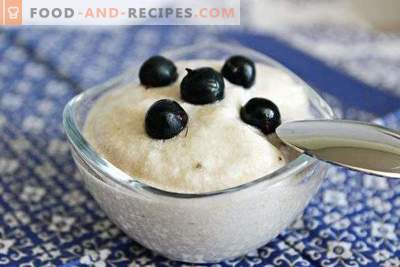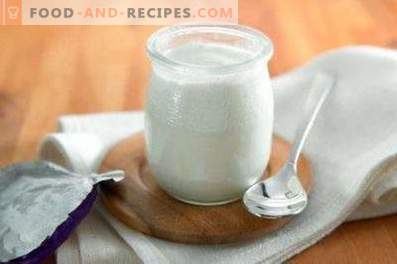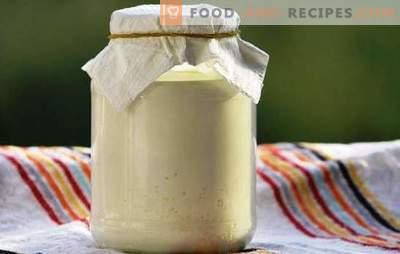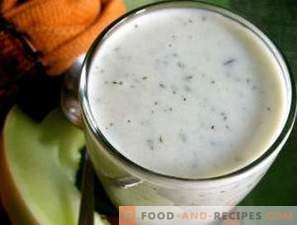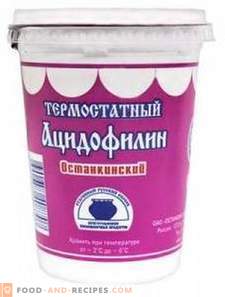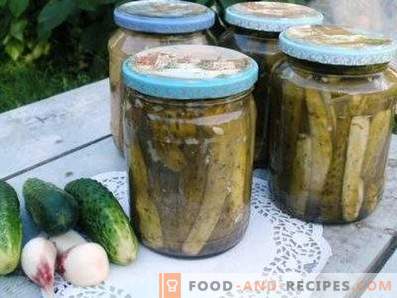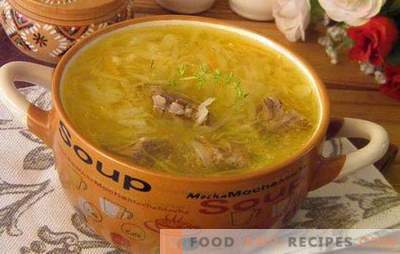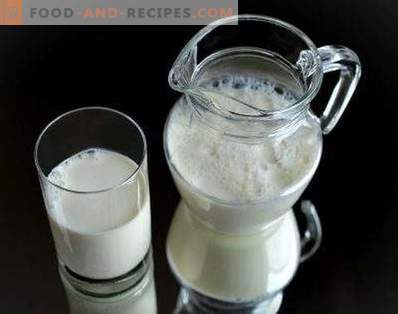
Milk is a useful product of natural origin, with incredible benefits. After all, it contains a large number of valuable biologically active components necessary for maintaining health. The only drawback of milk is that it deteriorates very quickly. To preserve the nutritional and biological value of this product, you should know the conditions of its storage and shelf life.
Types of milk
When buying milk, paying attention to the packaging, you can come across various terms like “Sterilized” or “Made from whole milk”. These terms indicate a variety of raw milk. Milk is divided according to GOST and differs in processing method. It is worth more to understand each type of milk.
Types of milk according to GOST:
- Solid. Whole is called filtered milk, which did not regulate the fat content. In such milk, the natural composition of proteins, fats and carbohydrates is fully preserved.
- Normalized. Under normalized milk is meant, which is divided into cream and reverse - a liquid having zero fat. Milk normalization is done in order to reduce its fat content and to make dairy products from it with the required percentage of fat content.
- Fat-Free. This is the type of raw milk from which cream was separated by separation. Skim milk is almost as good as whole in taste, but it has half the calories in it.
- Refurbished. Recovered milk is a product that is made from either concentrated milk or dry milk and water.
Types of thermally treated milk:
- Pasteurized milk becomes by using a one-time heating to 60 degrees. Pasteurization destroys the vegetative forms of harmful bacteria, but their viable spores remain, which under favorable conditions begin to actively proliferate. Mostly pasteurized whole milk and skim milk. Pasteurized milk has a short shelf life.
- Ultra-pasteurized milk is obtained by briefly heating the raw milk to a temperature of 137 degrees and rapid cooling. Thanks to the ultrapasteurization, the microorganisms that make milk sour, die, but its taste and nutritional qualities remain unchanged.
- Sterilized is considered to be milk that has been exposed to rather long heating at a temperature exceeding 100 degrees. As a result of sterilization, both “bad” and “good” bacteria die in milk, but it is stored for the longest time.
Storage depending on the type of packaging
Raw materials and method of processing are not the only factors affecting the shelf life of dairy products. It also depends on the type of packaging. Packing can be of three types: soft (betra-pack, fin-pack), semi-rigid (thermoplastics), semi-rigid of sheet and combined materials (tetra-rex, tetra-pack). For the storage of milk using a soft and semi-rigid packaging of sheet and combination materials. Thermoplastics are more in demand to preserve the freshness of fermented milk products.
Firms that work with dairy products with a short shelf life, prefer packaging made of polyethylene, plastic or low-cost cardboard. Most often, pasteurized milk is stored in a package of the listed materials, the shelf life of which ranges from 3 to 5 days. For milk that can be stored longer, that is, UHT-sterilized and sterilized, manufacturers use a semi-rigid packaging tetra-pack, since only it can ensure its aseptic filling. Milk in such a container may not lose its taste and benefits for up to 6 months.
Storing Fresh Milk
Some people prefer to buy fresh instead of factory milk. Of course, such milk is tastier and healthier, but its shelf life is very small. Homemade raw milk is very sensitive to the environment, so at room temperature after 2 hours it starts to turn sour. If you do not pasteurize such milk, it will have the following shelf life:
- 12 hours at 6-10 degrees;
- 18 hours at 6-8 degrees;
- day at 4-6 degrees;
- 36 hours at 3-4 degrees;
- two days at 1-2 degrees.
Storage of frozen milk
To extend the freshness of raw milk, you can resort to freezing. Just before freezing the dairy product, do not forget to pour it a little from the container in which it will be stored. The milk in the process of freezing expands, so it is important to free him enough space. In frozen form, the shelf life of milk is 1-1, 5 months. Frozen milk should always be defrosted only in the refrigerator compartment. On average, it takes 1-2 days.
Storage of boiled milk
Boiling is another way to prolong the freshness of milk. After boiling the milk can be stored in the refrigerator for 3-4 days. At home, it remains usable for 18 hours.
As a result of heat treatment, harmful bacteria die in milk, however, along with them, the useful properties of this product are lost. Therefore, milk is not recommended to repeatedly boil. In addition, some substances of milk under the action of boiling change their shape, causing the body becomes difficult to assimilate them.
Condensed milk
The storage time of everyone's favorite since childhood condensed milk is much higher than that of milk. The shelf life of condensed milk depends largely on the manufacturer. On average, it is stored from 6 to 12 months. If condensed milk is open, it should be consumed during the week, while keeping it in the refrigerating chamber at a temperature of from 0 to 10 degrees.
Goat's Milk
Fresh goat milk, like cow's milk, cannot be stored for a long time. It is recommended not to boil, and store at n-izkoy temperature. In this case, it can retain its freshness for 3-4 days.
Baked milk
Baked milk is considered a truly Slavic dish, which is very useful for people with poor health and children. This product contains a lot of fat and calcium.
Baked milk has approximately the same shelf life with boiled milk. The temperature at which it will be stored in the refrigerator should not exceed 8 degrees.
Powdered Milk
Dried milk is the product of processing cow milk solids. Due to the low moisture content, milk powder can be stored much longer and easier. The only disadvantage of this product is in taste - it is significantly different from fresh milk.
Whole powdered milk does not spoil for 8-10 months. But skimmed milk powder can retain its properties for up to 3 years. This product is recommended to be stored in the refrigerator. After opening the package, milk powder should be placed in a sealed glass container. Diluted milk powder should be consumed within 3 days.
Coconut Milk
Coconut milk is spoiled just as quickly as cow's. In the refrigerator from 0 to 5 degrees, it will remain fresh only for about 1-2 days. To store this milk of plant origin, it is recommended to use either glass or plastic containers. Fresh coconut milk before use, it is desirable to allow it to stand, to settle the cream. If desired, the cream with milk can not be removed - so it will have a higher fat content.
Soymilk
Soy milk is another alternative to animal milk. This product is highly valued by vegetarians and fasting people. To store soy milk is best to resort to the refrigerator. At a temperature of 4-8 degrees, it will save and taste, and benefit 3-4 days.
Simple tips for buying and storing milk
- When purchasing dairy products, always pay attention to the shelf life and give preference to the freshest milk.
- It’s better to buy as much milk as you can as quickly as possible.
- In the fridge, keep the milk on the coldest shelves and make sure that no strong-smelling products are stored next to it.
- Never pour back unused milk. It should be put in the refrigerator in a separate clean dishes.
- Under the influence of ultraviolet in milk, some vitamins are destroyed, so do not let the sun's rays fall on it.
